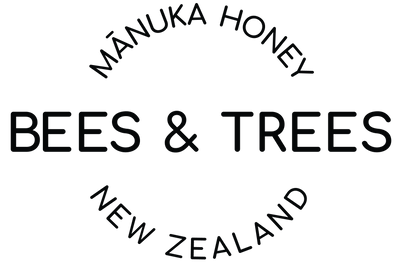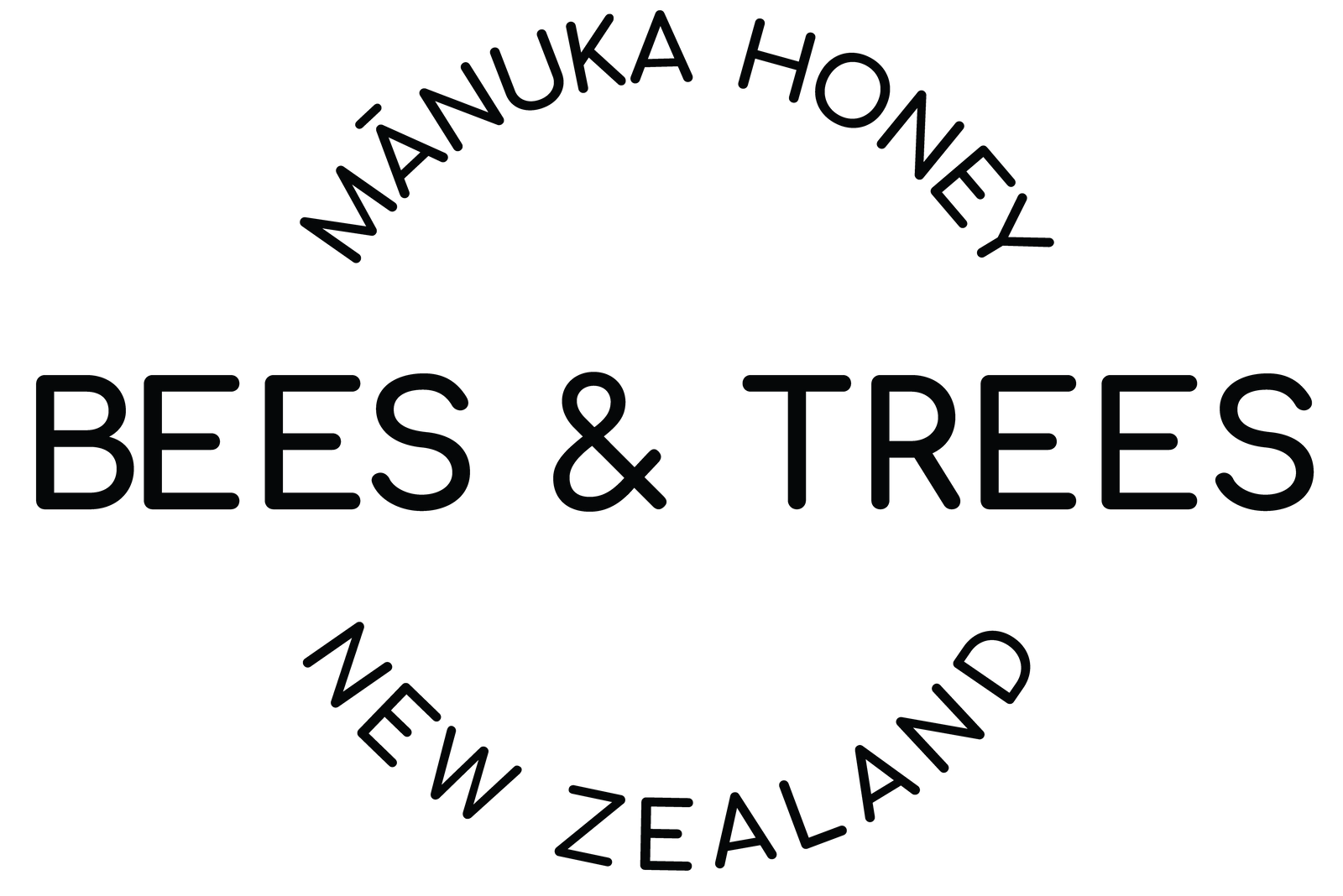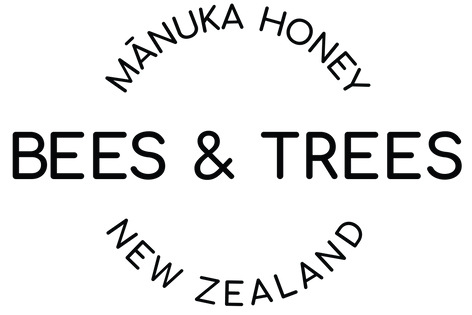How Manuka Honey Is Made
Native New Zealand Manuka Trees + Honey Bees + Careful Crafting
Flowering Manuka Trees
Manuka Honey is made from the nectar of the flowering Manuka tree, which is a native New Zealand tree. The Manuka tree has a white flower, sometimes tinged with pink. In our production region (Taranaki) the Manuka trees start blooming from mid December to mid January depending on the season. We place our hives into area with a high concentration of wild Manuka trees. Our apiary sites often border on mature native forest land in some of the most pristine wilderness in New Zealand. The hives are moved to these areas just ahead of the start of the flowering of the Manuka trees so the bees are in place and ready to forage as the nectar becomes available.

Honeybee foraging on flowering Manuka tree
Honeybees transform Manuka nectar into Manuka Honey
Honeybees forage for nectar when the weather is good. Warm temperatures, with daytime highs in the 70s, and nighttime lows above the mid 50s are required for the plants to present nectar at the flower. Rain or high winds can keep the bees from getting out to forage, so weather conditions are critical during the 4-6 weeks that the Manuka is typically in flower each year.

Bees forage specifically for the nectar of the Manuka flower in order to make honey. Pollen is also collected as a food source and stored separately from the nectar. Forager bees collect the nectar and upon returning to the hive, pass it on to younger hive bees. This begins a process of moving the nectar to honeycomb cells, depositing it along with enzymes the bees produce. The incoming nectar is about 70% water, which must be evaporated down to 20% or lower in order to turn the nectar into honey. The nectar is mostly sucrose, which is broken down by the bee's enzymes into glucose and fructose.

The bees evaporate most of the moisture from the honey by rapidly beating their wings over the honey cells, aided by warm temperature (95 degrees) within the hive. As the honey is dried, the bees produce wax and cap the cell to prevent it from reabsorbing moisture, thereby protecting it from mold and preventing fermentation.
Harvesting - Processing - Packing Manuka Honey
We closely monitor the flowering, weather forecast, and the progress of the honey making in the hive through the summer. When the timing is right, we begin the process of moving the hives out of the Manuka sites and harvesting the honey. The honey boxes are removed from the hives and transported to our processing facility in Stratford, Taranaki. Grouped by harvest area, the honey is weighed, tagged and catalogued. Each honey box has an RF tag that carries encoded information including the GPS coordinates of the site where the honey was produced. The boxes are stored in a "warm room" which simulates the inner hive temperature in order to keep the honey liquid for extraction. Extracting the honey from the comb involves three basic steps, piercing the wax seal on each cell, spinning at high speed to force the honey out of the cells, and then filtering the wax from the honey.

After extraction, the honey is ready to be packed into our jars. We minimize the processing in order to maximize the goodness and superior taste of the honey.
How Do We Know It Is Manuka Honey?
This is a question we are often asked. The bees will forage on whatever is in flower in the vicinity of their hives. The best way to control the purity of the honey is to place the hives into the right areas when the Manuka is starting to flower, and then remove them when it is finishing. The honey color, taste, and viscosity are all clues about purity of a Manuka crop in any given batch. The real proof though is determined by a full set of laboratory tests for each batch of honey.
There are two independent laboratories in New Zealand that test honey for the industry, and we utilize both of them. Of primary interest is dietary methylglyoxal, abbreviated as MG or MGO, and its precursor compound (dihydroxyacetone, or DHA). Test results are given as mg/kg, and the concentration of MG directly correlates to the health and wellness benefits of Manuka honey. Typical tests come back anywhere from 100–250 mg/kg at the time of harvest. The concentration of MG increases over time as the DHA converts to MG. For a detailed explanation of these tests, and the history of how they developed, read "DHA, MG, and manuka honey activity" by Megan Grainger, Ph.D. Student at the University of Waikato in New Zealand, and technologist at Analytica Laboratories, one of the two primary honey-testing labs in New Zealand.
Because of the propensity of MG to increase or grow over time, most Manuka honey is stored in bulk for 1-2 years prior to being packed, labeled and shipped out to retail outlets and consumers.
Read on for some common FAQs about Manuka honey. Click here.


